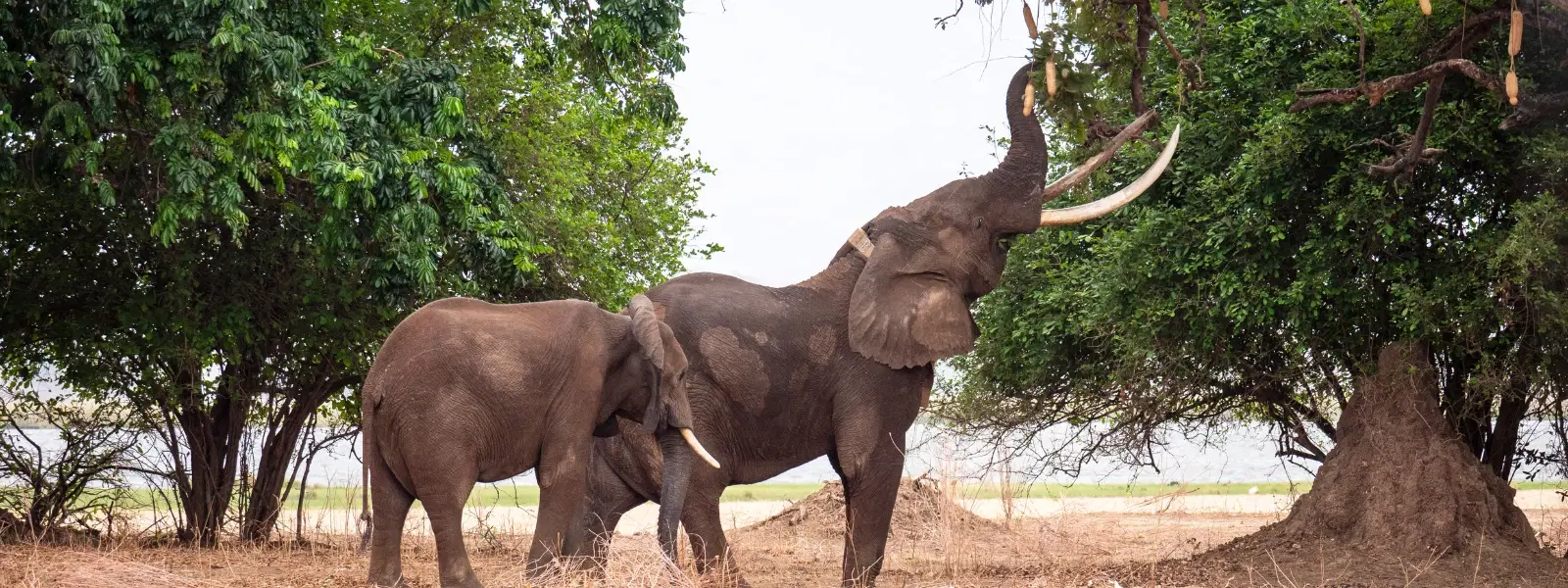
Hotels
•04 min read

Manas National Park stands as one of the globe's most captivating sanctuaries, celebrated as a UNESCO World Heritage Site and a beacon of biodiversity in Assam. In this blog, we delve into the park’s rich tapestry of wildlife, unravel its historical and cultural roots, and explore the innovative conservation practices that protect its endangered species. Readers will gain valuable insights into the park’s unique flora and fauna, its role in wildlife tourism, and the sustainable practices that ensure its preservation for future generations.
Declared a UNESCO World Heritage Site in 1985, Manas National Park has been recognized for its extraordinary natural beauty and ecological significance. The park meets stringent criteria that underscore its importance on a global scale. It is celebrated not just as a vast wilderness, but as a habitat where rare species thrive, making it an essential site for global biodiversity. Its status highlights the crucial roles that areas around the world play in conserving nature, while simultaneously nurturing local cultures and economies.
Named after the revered local deity, Manas, the park is steeped in history and cultural narratives that trace back centuries in Assam. Its designation as a biosphere reserve and a tiger reserve mirrors India’s pioneering conservation efforts. Beyond its role as a wildlife sanctuary, Manas has become a symbol of the region’s commitment to maintaining an ecological balance. The stories of local communities, intertwined with the park’s evolution, remind us of the timeless relationship between man and nature in this part of India.
Manas National Park is a mosaic of diverse ecosystems. Its landscape includes lush grasslands, dense forests, and expansive wetlands that serve as a sanctuary for a myriad of life forms. The park is home to a wide range of flora and fauna—each species contributes to its overall ecological tapestry. From towering trees and delicate wildflowers to elusive animals, every corner of Manas offers a new discovery. Iconic species such as the golden langur, pygmy hog, and the majestic Bengal tiger are among the celebrated inhabitants that attract nature enthusiasts and researchers alike.
The park plays a pivotal role in the protection of endangered species and the restoration of their natural habitats. Conservation initiatives here are robust, focusing on the survival and growth of species that are rarely found elsewhere. The Manas Tiger Reserve is a prime example of such focused efforts, enhanced by programs aimed at reintroducing species like the rhino. These efforts not only bolster the population of endangered species but also provide critical data for global wildlife conservation practices.

For nature lovers and travel enthusiasts, Manas National Park offers an array of explorative adventures. Whether it is the thrill of jeep safaris across rugged terrains, the gentle pace of elephant safaris, or the serene delight of birdwatching, the park caters to every interest. The best time to visit is between November and April, when the climate is pleasant and opportunities to witness wildlife in their natural habitat are at their peak. Accessibility is straightforward for most visitors, with well-organized travel routes connecting the park to the heart of Assam.
Eco-tourism is at the core of the Manas experience. Visitors are encouraged to engage with the park's natural beauty responsibly. Practical tips for sustainable travel include adhering to marked trails, minimizing waste, and respecting wildlife habitats. Responsible tourism not only enriches your travel experience but also contributes directly to conservation efforts. By making informed choices, each visitor plays a part in ensuring that this conservation hub in India thrives for generations to come.
Did You Know? Manas National Park is the only park in Assam that combines the designations of UNESCO World Heritage Site, Project Tiger Reserve, Elephant Reserve, and Biosphere Reserve, making it a unique conservation hub in India.
Despite its many accolades, Manas National Park faces significant challenges. Poaching, habitat loss, and human-wildlife conflicts continually threaten its delicate ecosystem. Furthermore, the impacts of climate change—ranging from unpredictable weather patterns to shifting ecological balances—present new obstacles for conservationists. Each of these threats underscores the urgent need for concerted efforts to safeguard the park’s biodiversity.
Across Manas, ongoing conservation projects provide hope for the future. These initiatives involve close collaboration with local communities, turning traditional wisdom into modern conservation practices. The park serves as a role model for balancing growth and conservation, combining scientific research with community-led efforts. By addressing modern challenges with innovative strategies, Manas National Park continues to inspire sustainable development, blending nature preservation with community empowerment in a delicate balance.

Manas National Park was declared a UNESCO World Heritage Site in 1985.
Several national parks in India hold UNESCO status, including Manas National Park, Kaziranga National Park, and Sundarbans National Park.
Manas National Park is famous for its rich biodiversity, including endangered species like the golden langur, pygmy hog, and Bengal tiger, as well as its designation as a UNESCO World Heritage Site.
Manas National Park is located in Assam and is recognized as a UNESCO World Heritage Site.
The best time to visit Manas National Park is between November and April, when the weather is pleasant and wildlife sightings are more frequent.
Manas National Park embodies a delicate interplay of nature and culture, standing tall as a UNESCO World Heritage Site rich in biodiversity and wildlife heritage. The park not only protects endangered species, but also offers memorable experiences for travelers while continuously striving towards a sustainable future. Preserving this wildlife jewel is crucial for the benefit of both local communities and global natural heritage, inviting every nature enthusiast to explore Assam’s wondrous landscapes with renewed respect for its inhabitants.